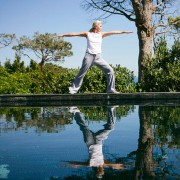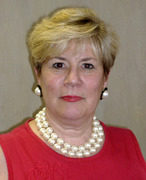 Photo: Getty Images
Photo: Getty Images
In today's America, everyone is searching for ways to stay young, healthy and in shape. Research and studies tend to focus on scientifically proven areas of care, though a growing sect has been helping the elderly find alternative methods to treat their illnesses and deal with pain. There are many types of alternative medicines and therapies people swear by. The following is a list of some of the more effective non-traditional treatments available:
Acupuncture – has been used for over 2,000 years with its roots in China. And has now become common in the U.S. Covered by many insurance carriers, seniors may not have to pay out of pocket. The acupuncturist inserts tiny needles into different pressure points along the body called meridians. When inserted they cause no pain for the patient or bleeding but have been shown to relieve pain, nausea, high blood pressure, asthma, enlarged discs, and internal swelling. There are also few if any side effects of this method. A typical session can last anywhere from 45 to 60 minutes and you usually have to go back six to 12 times.
Biofeedback – through an electronic monitoring device that helps identify the circumstances that trigger symptoms, individuals are taught how to avoid or cope with these stressful events. Most are encouraged to change their habits, and some are trained in special techniques for gaining such self-control. Biofeedback is not magic. It cannot cure disease or by itself make a person healthy. It is a tool, one of many available to health care professionals. It confirms that behavior, thoughts, and feelings profoundly influence physical health. And it helps both patients and doctors understand that they must work together as a team.
Reiki – or "healing hands" allows someone to channel or focus their body’s own natural energy fields by laying their hand near or on someone to stimulate healing. Even though this may seem like something out of a science fiction novel, it has been used for hundreds of years and is now practiced in many medical centers in America.
Meditation – is often associated with Eastern religious groups such as Buddhism and involves a process of focusing on calming your mind and body to bring about a relaxation response. Scientists have determined that during proper meditation, certain regions of the brain activate which produces a calming effect on the nervous system. This method is ideal for helping with stress, high blood pressure, enhanced immune response, and pain relief.
Yoga – similar to meditation, yoga was developed in ancient India and focuses on breathing techniques, stretching, and various exercise positions. The most difficult positions are meant to strengthen the body. Most hospitals, assisted living facilities, gyms, and senior centers have classes to show seniors how to effectively use yoga. Yoga has been shown to help reduce heart rate, lower high blood pressure, build up muscles, decrease anxiety, and relieve pain.
Elderly people are faced with all types of issues as their bodies and minds age. These alternative methods might help them with a chance for long standing relief.






Add a CommentComments
There are no comments yet. Be the first one and get the conversation started!